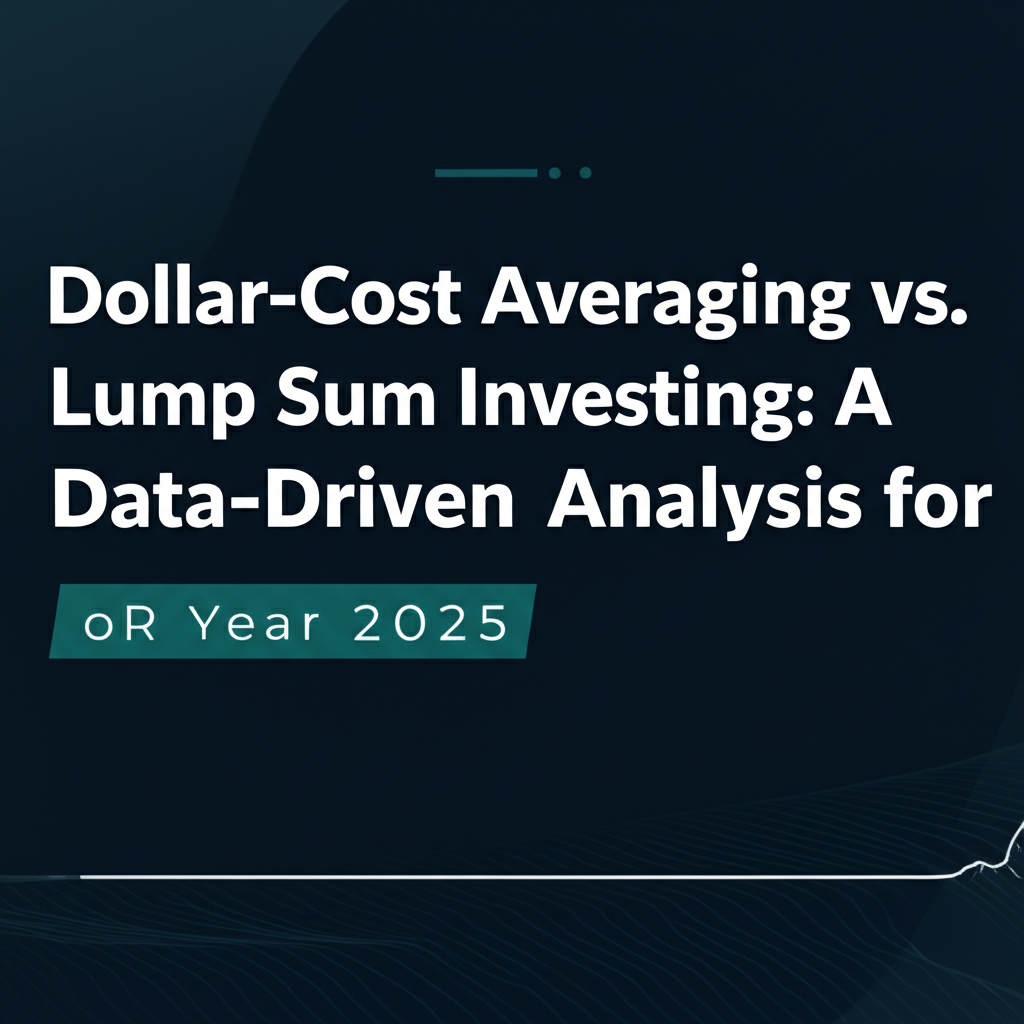
The debate between dollar-cost averaging (DCA) and lump sum investing has raged for decades among investors. With market volatility remaining elevated in 2025 and many investors sitting on cash from bonuses, inheritances, or asset sales, the question has never been more relevant: Should you invest it all at once or spread it out over time?
Dollar-cost averaging involves investing a fixed amount at regular intervals, regardless of market conditions. Lump sum investing means investing the entire amount immediately. While both strategies have merit, the data tells a compelling story that might surprise investors conditioned to fear market volatility.
Historical analysis reveals a clear winner from a pure returns perspective. Vanguard’s comprehensive study examining rolling 10-year periods from 1926 to 2015 found that lump sum investing outperformed dollar-cost averaging approximately 68% of the time. The average outperformance was meaningful—about 2.3% annually. This advantage stems from a simple principle: markets tend to rise over time, so the sooner you’re fully invested, the more you benefit from this upward drift.
The mathematics behind this advantage are straightforward. If markets have a positive expected return—which they must for investing to make sense at all—then delaying investment through DCA means missing out on expected gains. Every day your money sits in cash waiting to be invested is a day it’s not working for you in the market.
However, the psychological dimension complicates this seemingly simple decision. Dollar-cost averaging serves as a form of regret minimization. Investors who put everything into the market just before a significant decline experience profound regret, even if they intellectually understand that short-term volatility is irrelevant to long-term returns. DCA spreads out the entry points, reducing the probability of investing everything at the worst possible moment.
Consider two investors, each with 120,000toinvestinJanuary2025.Mariainveststheentireamountimmediatelyinadiversifiedindexfund.Daviddecidestoinvest120,000toinvestinJanuary2025.Mariainveststheentireamountimmediatelyinadiversifiedindexfund.Daviddecidestoinvest10,000 monthly over the next year. If markets rise 10% over the year (in line with historical averages), Maria’s approach would yield approximately $6,000 more than David’s, assuming linear growth. But if markets decline 20% in the first month before recovering, David would feel vindicated in his caution, even if Maria still comes out ahead long-term.
The optimal strategy depends on several personal factors. First, consider your investment timeline. For retirement savings with a 20+ year horizon, the mathematical advantage of lump sum investing becomes more compelling. Short-term volatility matters less when you have decades for recovery and growth. For shorter-term goals, DCA’s volatility smoothing might provide value beyond pure returns.
Second, assess your risk tolerance honestly. If investing a large sum all at once would cause you to lose sleep or panic-sell during a downturn, DCA might be worth the expected return sacrifice. The best investment strategy is one you can stick with through market turbulence. Behavioral economists note that the pain of losses feels approximately twice as intense as the pleasure of equivalent gains—a phenomenon called loss aversion that DCA helps mitigate.
Third, consider the source and nature of the funds. Money from selling a house or receiving an inheritance often carries emotional weight that amplifies investment anxiety. In these cases, a hybrid approach might work best—investing perhaps 50% immediately and dollar-cost averaging the remainder over 6-12 months.
Market conditions, despite investor temptation to consider them, should play a minimal role in this decision. Countless studies show that even professional investors cannot consistently time the market. What feels like an overvalued market might continue rising for years, while seemingly cheap markets can get cheaper. The data shows that time in the market beats timing the market with remarkable consistency.
For those who choose DCA, optimization is possible. Rather than arbitrary monthly investments, consider accelerating the schedule. Research suggests that DCA over 6 months captures much of the regret-minimization benefit while reducing the return sacrifice compared to 12-month or longer periods. Also, continue investing any dividends or interest immediately rather than accumulating them for the next scheduled investment.
The decision ultimately reflects a trade-off between maximizing expected returns and managing psychological comfort. For most investors with long time horizons and stable temperaments, the data supports lump sum investing. But for those who know they’ll struggle with the potential for short-term losses, DCA offers a reasonable compromise that keeps them invested and on track for their goals.
Whatever strategy you choose, the most important step is to invest. Analysis paralysis keeps more money on the sidelines than any market downturn ever could. Whether you dive in all at once or wade in gradually, the key is to start. In investing, as in life, perfect is often the enemy of good, and good is more than sufficient for building long-term wealth.
